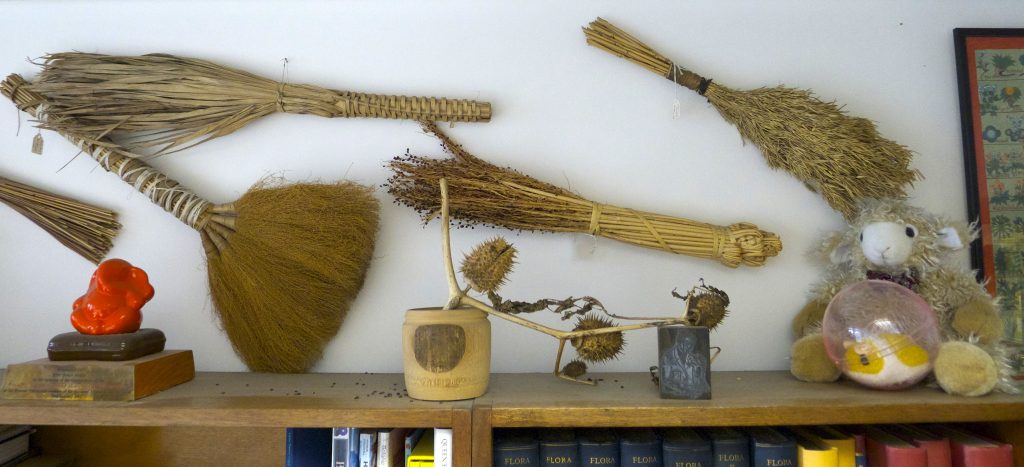Taxonomic botanists are curious creatures. And I mean this in two ways – not only being (frequently) curious in themselves, but, of necessity for their work, possessed of curiosity!
Many who travel in foreign parts in search of herbarium specimens or living plants for the Garden become intrigued by the cultures of the countries they are lucky enough to find themselves in. And in many cultures plants are still used extensively, on a daily basis, not only as foods and medicines, but for the making of household objects. My own special interest is monocots, particularly grasses, sedges, rushes and palms. Because of the anatomical structure of monocot stems, lacking the secondary thickening and woodiness characteristic of dicots, their reliance for flexible strength on diffuse bundles of water-conducting tissues pre-adapts them for uses such as making into swishy brooms.
On my travels in China, India and the Himalayas I have made a small collection of these, and use them to decorate my office walls (see photo). Three of these are made of the stems (‘culms’) and flowering parts (‘inflorescences’) of grasses. Of these, two come from street markets in Yunnan in SW China (one from a species of Miscanthus, the other a Sorghum) and one from Shillong in the Khasia Hills of NE India (made of a mixture of Arundinella and Eulalia). Another is made from the leafy shoots of a dwarf bamboo (Yushania microphylla) from high altitude in Bhutan. A pair is made from the fan-shaped leaves of a rare palm from Bhutan (probably Livistonia jekinsiana). And my friend Susanna Beaumont of doggerfisher brought me two from Egypt – these are both made from the date-palm (Phoenix dactylifera), one from the flowering parts, one from the tough, cloth-like fibres from the leaf bases. These date-palm brooms are currently on display in the ‘World of Palms’ exhibition in the John Hope Gateway, RBGE.

